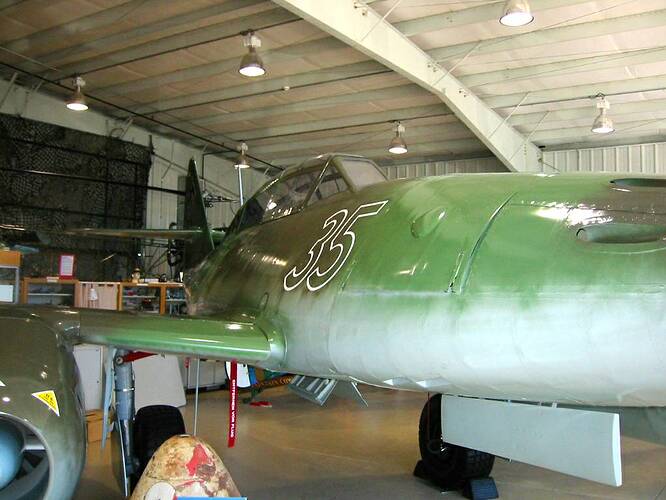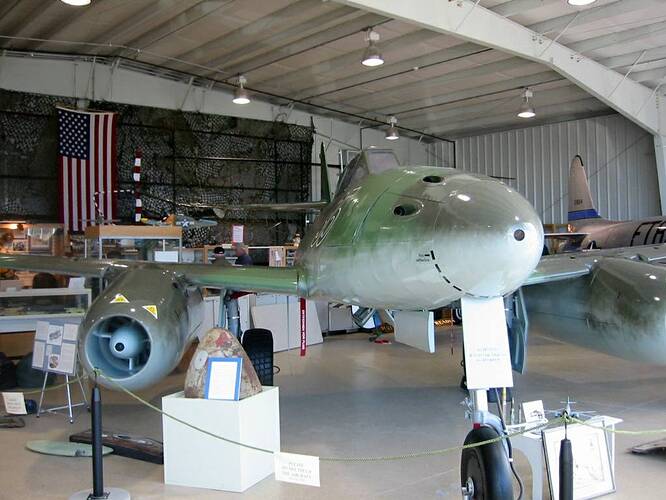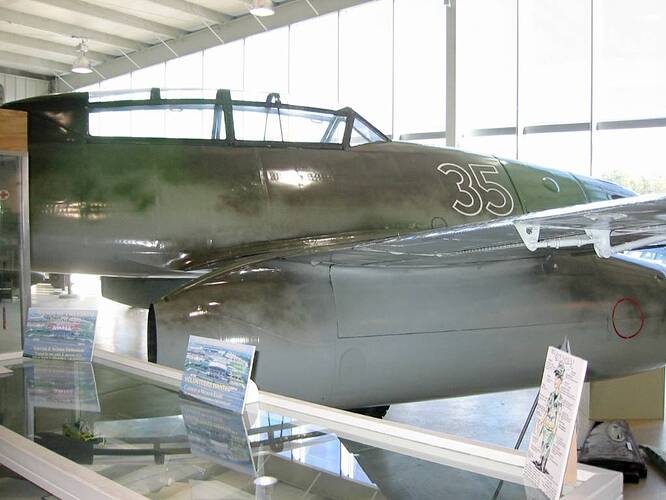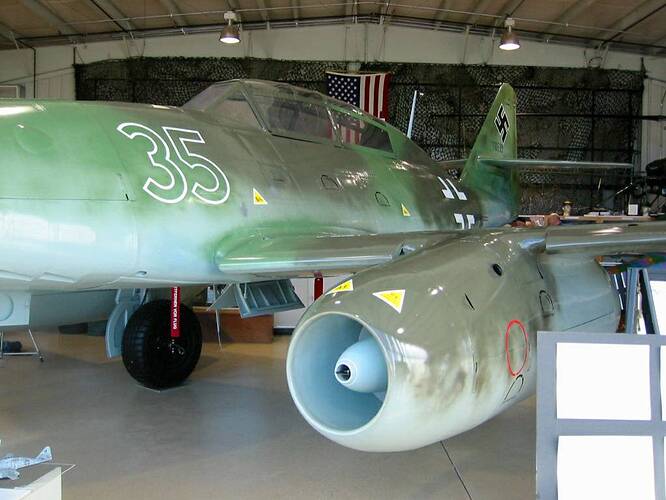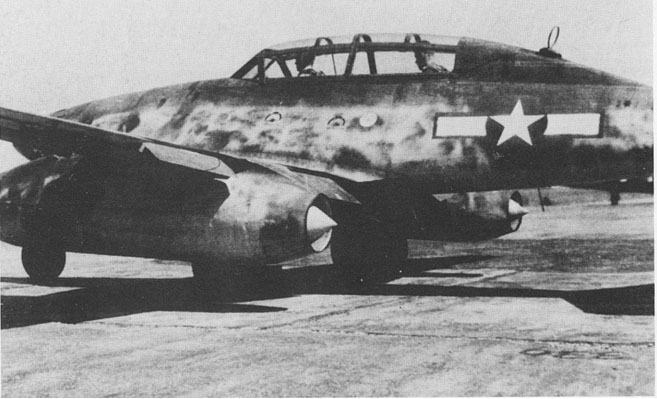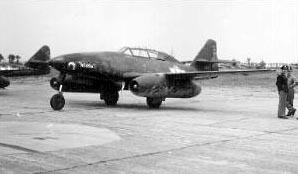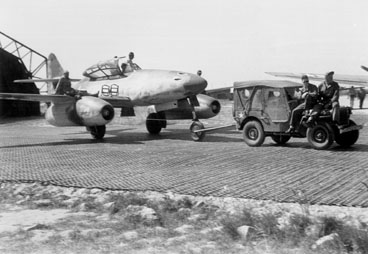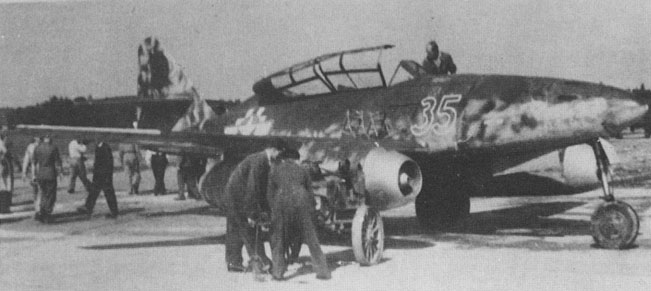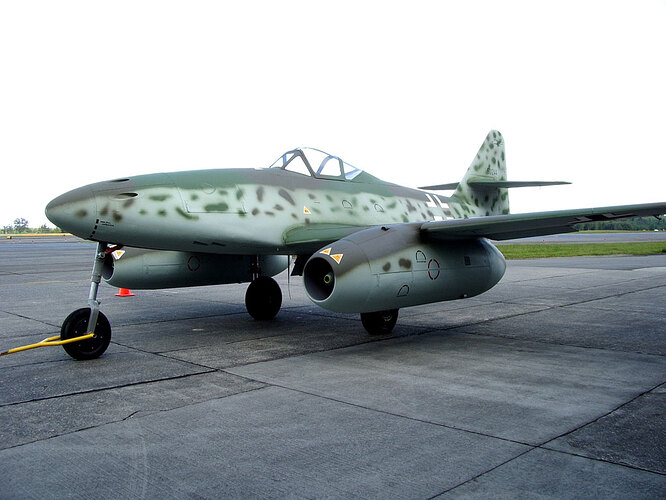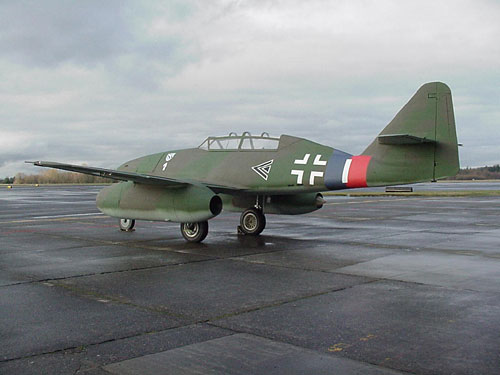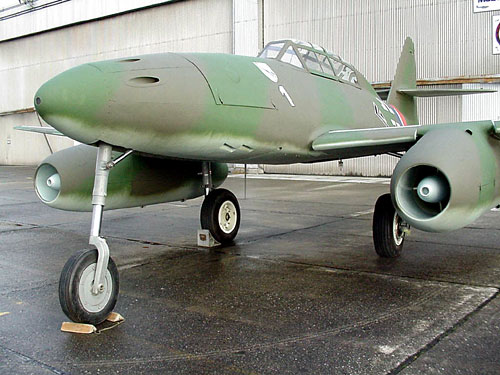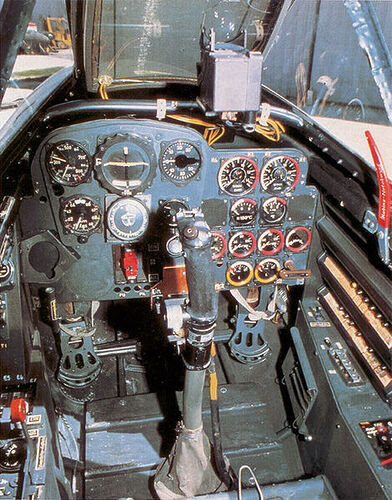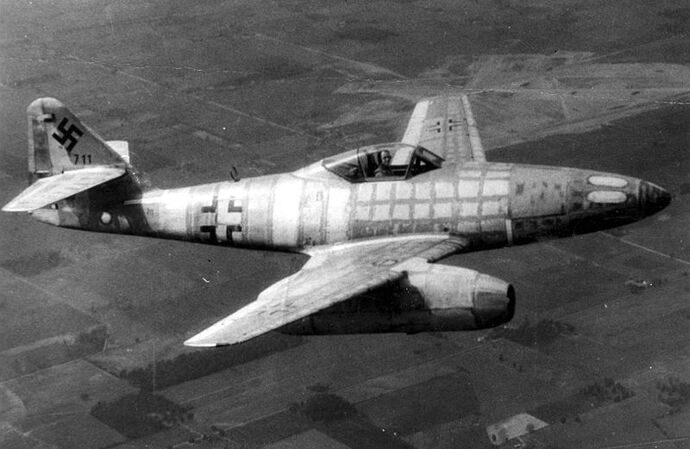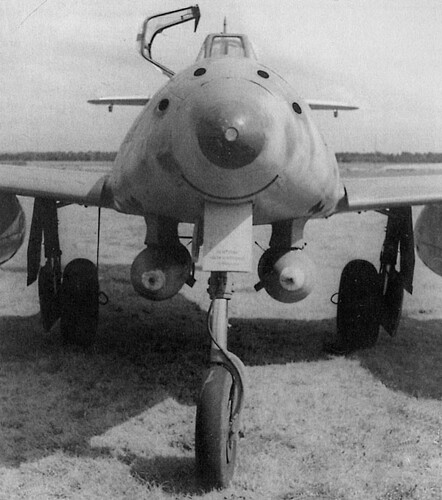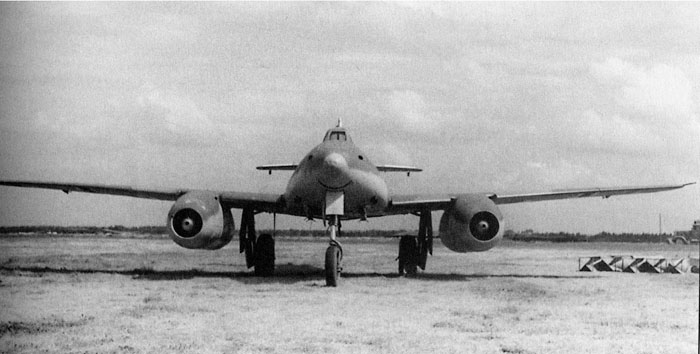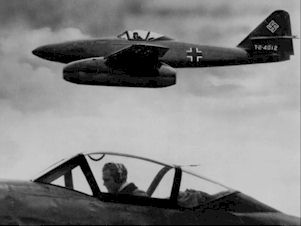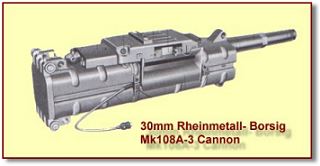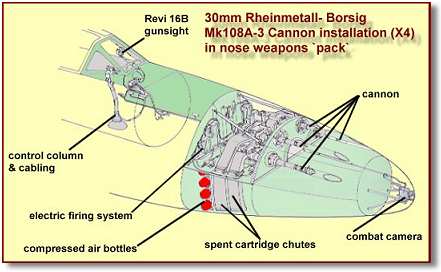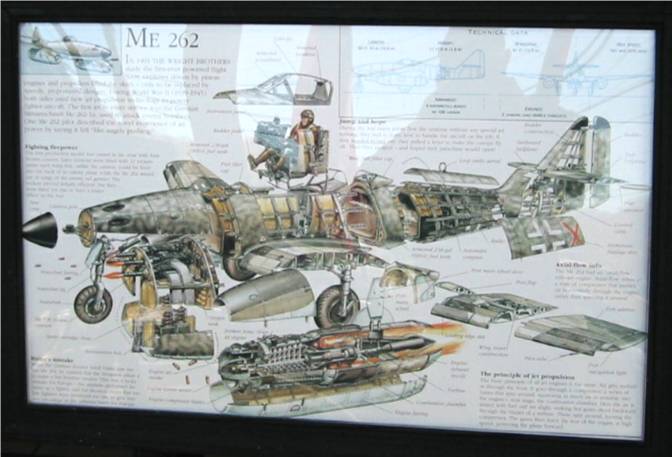Hi awack,
I am getting these figures.
XP-80A weights: 7,920 lb empty, 11,700 lb gross, 14,000 / 14,500 lb maximum take off weight
http://www.aviation-history.com/lockheed/p80.html
http://www.daveswarbirds.com/usplanes/aircraft/shootstr.htm
Me 262A-1a weights: 8,378 lb empty, 9,742 lb typical, 10,154 lb gross basic, 14,110 lbs. maximum take off weight
http://www.warbirdalley.com/me262.htm
http://en.wikipedia.org/wiki/Messerschmitt_Me_262
http://www.xs4all.nl/~fbonne/warbirds/ww2htmls/messme262.html
http://www.pilotfriend.com/photo_albums/timeline/ww2/Messerschmitt%20Me%20262.htm
http://www.zenoswarbirdvideos.com/Images/Me262/262PilotHandbook.pdf
XP-80 weights: 6,287 lb empty, 8196 pounds loaded.
http://home.att.net/~jbaugher1/p80_1.html
http://tanks45.tripod.com/Jets45/Histories/Lockheed-L140/XP80.htm
Note that the maximum take off weight of the XP-80A and Me 262 are almost the same.
The empty weight of the XP-80A and Me 262 are very close - the Me 262 was 458 lb heavier.
However, the empty weight of the XP-80 and Me 262 differ - the Me 262 was 2,091 lb heavier.
Also the loaded weight of XP-80 and Me 262 basic gross weight differ - the Me 262 was 1,958 lb heavier - This seems to back up the statement by BuzzLightyear quoted at bottom that the side by side comparison was between a stripped recon verson of the Me-262 and the XP-80 (which was dimensionally smaller and had 1,000 lbs less thrust than the P-80A).
(In light of your quote: “Despite a difference in gross weight of nearly 2,000 lb (907 kg), the Me 262 was superior to the P-80 in acceleration, speed and approximately the same in climb performance.”)
In 1946 after exhaustive flight testing the XP-80 was transferred to the Smithsonian Institution where it is on display today.
http://tanks45.tripod.com/Jets45/Histories/Lockheed-L140/XP80.htm
From:
LWAG The Luftwaffe Archives & Records Reference Group
http://www.lwag.org/phpBB2/viewtopic.php?p=705000&sid=dbc6c625cb0fa2b5468b2a8a6c929fb5
posted by Richard T. Eger, Sun July 30, 2000 7:37 pm
The following are key records taken from the Seymour, IN, newspaper relating to Freeman Field activities with captured aircraft at the end of WW II:
INFORMATION EXTRACTED FROM THE SEYMOUR DAILY TRIBUNE,
SEYMOUR, INDIANA, REGARDING CAPTURED LUFTWAFFE AIRCRAFT
BROUGHT TO FREEMAN FIELD AFTER WW II
(Data obtained by Richard T. Eger, ~9/72, 11/30/74, 3/1/75, and 3/8/75)
5/22/46
“Slick-up” Me-262 left Freeman field late afternoon bound for Wright Field, AMC HQ, where it will be subjected to a series of tests to determine its utmost capabilities. Plane, which came from Germany via a British aircraft carrier, was completely rebuilt and brought up to safety standards demanded by AAF. A new coat of special aircraft paint was applied to plane to bring out fullest speed capabilities. Several other aircraft of the same type (assume Me 262) are still assigned to the base (Freeman Field). (I presume the above was a quote, but I failed to use quotation marks).
Regarding critical mach number, the information I’ve seen rated the Me 262 faster in a dive.
There seems to be conflicting information on the Me 262 vs P-80 comparison tests at Wright Field after the war. I am just trying to get a more complete picture of what actually occured. It would be nice to see the records of all the studies that were conducted. BuzzLightyear stated that at least four additional comparison studies were done.
As I find more information, I will pass it on.
Best Regards,
George
More interesting information on the Me 262 vs P-80 comparison tests at Wright Field after the war.
The Great Planes
A Source About World War 2 Aviation
BuzzLightyear
Posted - February 04 2004 : 02:46:29 AM
http://www.tgplanes.com/Public/snitz/topic.asp?TOPIC_ID=56&SearchTerms=ExtraversionBTW, I agree the P-80A was the best jet fighter to emerge from WWII. It simply gave up nothing to the Me-262 in terms of performance, being superior in just about every imaginable performance category. It was faster at all altitudes. Had a ceiling of some 8,000 feet higher. It had a better drag coefficient. It had a higher critical mach. It had better power-to-weight ratio. Better wing loading. Better range.
The P-80A roll rate was simply amazing for that era:
The only area where the P-80 could have used improvement was the stick force required in longitudnal manuevers with a signficantly forward center-of-gravity. It could be very high. As center-of-gravity shifted back, control stick forces were exceptionally light.
[b]I’ve seen (In the book Me-262, Smith and Creek, Volume 4) a summary of a direct comparison test done after the war that suggested the overall superiority of the Me-262. But it’s important to note that that comparsion was between a stripped recon verson of the Me-262 and the XP-80 (which was dimensionally smaller and had 1,000 lbs less thrust than the P-80A). This was the only test that I know of where both planes were present at the same place and time.
However, I know of at least 4 other comparison studies that were done by the USAAF between the P-80A and the Me-262. Results of two of those tests are unknown to me. The others concluded the general superiority of the P-80A. One pilot in one of the latter tests stated “The Me-262 may be the best jet fighter in service, but the P-80 is the best jet fighter in the world.” I guess he meant combat service. [/b]
Regards,
Buzz





